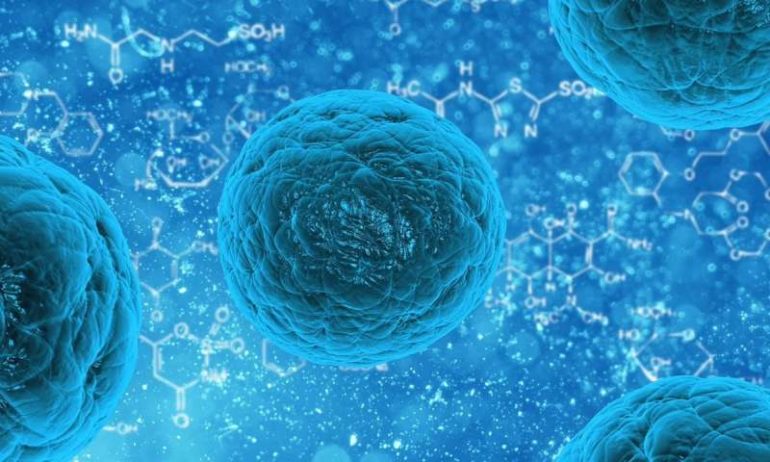Chemists at Radboud University discovered a unique material in 2013. From a synthetic polymer named polyisocyanopeptide (PIC), they made a gel that behaves similar to the matrix that surrounds the cells in your body. The material exhibits a special property that is not found in other materials: it gels on heating and returns to a liquid solution as it is cooled. With this special combination of properties, there is a vast number of potential clinical applications for the gel.
In a series of recent publications researchers at Radboud University and Radboud university medical center demonstrate that the PIC gel is extremely suitable as a cell culture platform outside of the body (in vitro). By modifying the properties of the gel, they can tune cell growth and development. In this way it is possible to control the growth of organoids—tiny organs that are produced from human cells in a test tube—through the gel. With the gel they are also able to direct stem cells growth and development and which substances they secrete.
Standard model organs
“Scientists normally use mouse tumor extract as a culture medium for organoids,” says Paul Kouwer, molecular chemist at Radboud University. “Due to the unstable composition of this extract, however, the results are highly variable.”
“The advantage of the PIC gel is that each time the growth medium has exactly the same composition, which means that the organoids are more suitable for use as standard model organs for medical research, for example into cancer.” In a subsequent publication, the researchers demonstrated that the PIC gel can be used to control the cellular development, which we can use for the growth of tissues.
No stem cells needed in the body
In stem cell therapy, stem cells from the patient or a donor are introduced into the body to replace absent or defective cells in blood, tissues or organs. After transplantation the stem cells generally die. Kouwer: “Even though the stem cells typically do not survive very long, stem cell therapy is nevertheless successful. One theory suggests that the important factor is not the stem cells themselves, but what they secrete in the body.”
“In one of our publications we have shown that the PIC gel can be tuned to control which substances stem cells secrete. These bioactive compounds can then be used to treat illnesses, which means that it is no longer necessary to introduce the stem cells into the body.”
The results underline the versatility of the PIC gel. “We aim to further develop materials such they can ultimately be applied in a clinical setting.” Simultaneously, the chemists in Kouwer’s group are further advancing research into other possible applications of the gel.
Organoids produce embryonic heart
More information:
Liu, et al. Synthetic Extracellular Matrices as a Toolbox to Tune Stem Cell Secretome ACS Appl. Mater. Interfaces2020. DOI: 10.1021/acsami.0c16208
Ying Zhang et al. Tunable Hybrid Matrices Drive Epithelial Morphogenesis and YAP Translocation, Advanced Science (2020). DOI: 10.1002/advs.202003380
Ying Zhang et al. Polyisocyanide Hydrogels as a Tunable Platform for Mammary Gland Organoid Formation, Advanced Science (2020). DOI: 10.1002/advs.202001797
Bing Wang et al. Antimicrobial and anti-inflammatory thermo-reversible hydrogel for periodontal delivery, Acta Biomaterialia (2020). DOI: 10.1016/j.actbio.2020.09.018
Provided by
Radboud University
Citation:
Hydrogel controls cell growth outside the body (2020, December 11)
retrieved 12 December 2020
from https://phys.org/news/2020-12-hydrogel-cell-growth-body.html
This document is subject to copyright. Apart from any fair dealing for the purpose of private study or research, no
part may be reproduced without the written permission. The content is provided for information purposes only.
